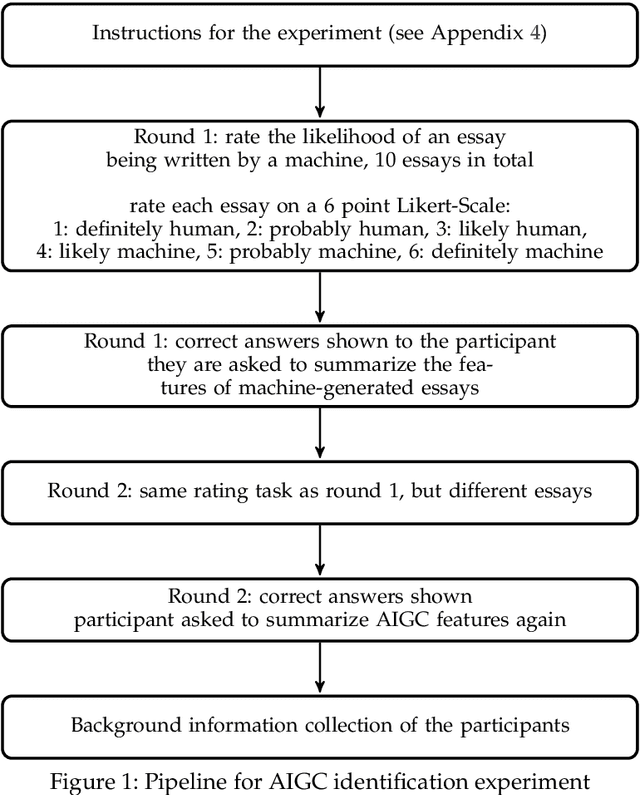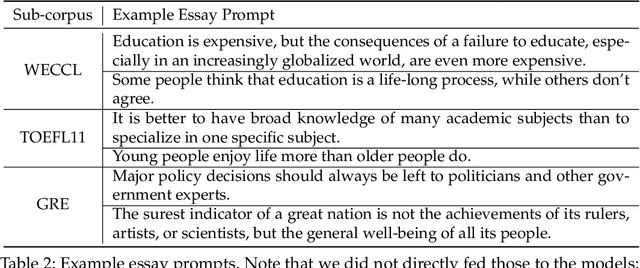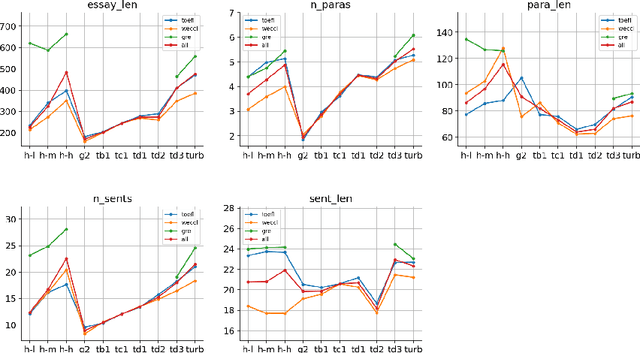Wanyang Zhang
ArguGPT: evaluating, understanding and identifying argumentative essays generated by GPT models
Apr 16, 2023



Abstract:AI generated content (AIGC) presents considerable challenge to educators around the world. Instructors need to be able to detect such text generated by large language models, either with the naked eye or with the help of some tools. There is also growing need to understand the lexical, syntactic and stylistic features of AIGC. To address these challenges in English language teaching, we first present ArguGPT, a balanced corpus of 4,038 argumentative essays generated by 7 GPT models in response to essay prompts from three sources: (1) in-class or homework exercises, (2) TOEFL and (3) GRE writing tasks. Machine-generated texts are paired with roughly equal number of human-written essays with three score levels matched in essay prompts. We then hire English instructors to distinguish machine essays from human ones. Results show that when first exposed to machine-generated essays, the instructors only have an accuracy of 61% in detecting them. But the number rises to 67% after one round of minimal self-training. Next, we perform linguistic analyses of these essays, which show that machines produce sentences with more complex syntactic structures while human essays tend to be lexically more complex. Finally, we test existing AIGC detectors and build our own detectors using SVMs and RoBERTa. Results suggest that a RoBERTa fine-tuned with the training set of ArguGPT achieves above 90% accuracy in both essay- and sentence-level classification. To the best of our knowledge, this is the first comprehensive analysis of argumentative essays produced by generative large language models. Machine-authored essays in ArguGPT and our models will be made publicly available at https://github.com/huhailinguist/ArguGPT
 Add to Chrome
Add to Chrome Add to Firefox
Add to Firefox Add to Edge
Add to Edge